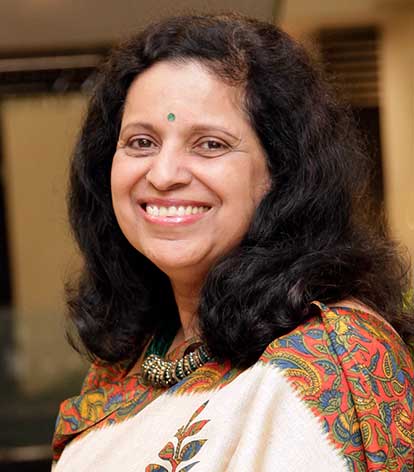Overview
At this year’s ARC Industry Forum in Orlando there was a stimulating session on the recurrent theme of digital transformation. ARC’s Greg Gorbach, Vice President, moderated this session that featured four speakers from the second edition of theARC Industrial Digital Transformation Top 25report. In his introductory speech Greg said that digital transformation yields measurable results in terms of productivity, quality, safety and improved customer outcomes. Progress is visible in many of the digital transformation instances being tracked for the report; and the key aspect is how technology is being used to make a fundamental change. The meticulous methodology used to calculate the composite scores of the leaders in the digital transformation space was explained. Important factors on the digital transformation journey are sustainability, scalability, empowering the operational frontline workers, and culture change.
second edition of theARC Industrial Digital Transformation Top 25report. In his introductory speech Greg said that digital transformation yields measurable results in terms of productivity, quality, safety and improved customer outcomes. Progress is visible in many of the digital transformation instances being tracked for the report; and the key aspect is how technology is being used to make a fundamental change. The meticulous methodology used to calculate the composite scores of the leaders in the digital transformation space was explained. Important factors on the digital transformation journey are sustainability, scalability, empowering the operational frontline workers, and culture change.
This Insight captures the salient points of the presentations and the lively panel discussion. The speakers in order of their presentations:
- Mike Tomasco, Vice President, Digital Manufacturing, Pfizer Digital
- Mike Isbill, Lockheed Martin Fellow, Digital Sustainment Analytics, Lockheed Martin
- Clark Dressen, Global Director, Dow
- Jeff Kent, Vice President, Smart Platforms Technology & Innovation, Procter & Gamble
The Digital Transformation Journey
Pfizer
Pfizer ranked #1 in the second edition of ARC’s DT Top 25 report. The company embarked on their digital transformation journey in 2016. The concept of the digital manufacturing group brought in great ideas from a digital and IT perspective and later OT partners entered the fray. The company’s purpose, “driving breakthroughs that change patients’ lives” has always been an important part of what they do, but now they realize how a common situation like COVID-19 connected everyone. COVID galvanized their thought processes, and when they were asked “what medicines do you have to fight this and when can we get it?” Pfizer jump started its digital transformation journey. The numbers say it all: 50 billion doses of medicine and 1.4 billion patients (2021) – i.e., 1 out of every 6 people in the world. “Every dose has to be perfect and of high quality,” said Mike.
The next step was to replicate and “do more at more locations.” Pfizer has core capabilities – i.e., a huge swath of digital and engineering capabilities anchored against the concept of the digital plant maturity model – BioForm, a life sciences model that can be adapted for different purposes. With the core capability solution, you can connect to a standalone MES and get a digital silo that can be connected to equipment, stream data to the historian that is hooked to the manufacturing intelligence platform leading to predictive capabilities. “There’s no one-size-fits-all solution,” said Mike. So, the company decided to pick the top 10 plants that generate the majority of the products (in revenue), look at the 100 solutions, and then figure out how to distribute these efficiently. Typically, teams don’t really talk to each other – their paths cross only occasionally. So, they began mapping and analyzing all operational areas and developed a closed-loop mechanism to track and measure usage, adoption, and key KPIs. According to Mike, “It’s all about getting more data in context to do really cool things with analytics and that’s the driver of digital transformation that will ultimately drive tremendous amount of value.”
Lockheed Martin
邁克Isbill談到了c - 130 j飛機,has been continually in production since 1954 and there’s no digital twin available for it. Initially, analysis was being done in retrospect; the focus had to change to letting the customer know what’s coming down the line on a first-generation aircraft. Sensors were added to the C-130J aircraft, but Big Data was not in vogue then (1998). There was a little card on the aircraft that captured 30 megabytes of data per hour; this comprised mainly of maintenance and repair data. This was the starting point: how to find all the data and how to utilize it? Most aircraft programs, for example the F-22 has one customer and one data system, and it all comes in looking the same. Lockheed Martin has 23 customers now – the maintenance records are sometimes handwritten, require translation, or on an Excel spreadsheet; all this has to be gathered and cleaned up. Lockheed Martin’s largest customer has youngsters who fix the aircraft, but they don’t enter data into the system. So, Lockheed Martin used SAS analytics to develop the text analytics machine learning algorithm to clean the data. Because the first step on the digital transformation journey is to have accurate data.
ARC Advisory Group clients can view the complete report atARC Client Portal
If you would like to buy this report or obtain information about how to become a client, pleaseContact Us
Keywords: Digital Transformation, DT Top 25, Sustainability, Scalability, Culture, Pfizer, Lockheed Martin, Dow, Procter & Gamble, ARC Advisory Group.

